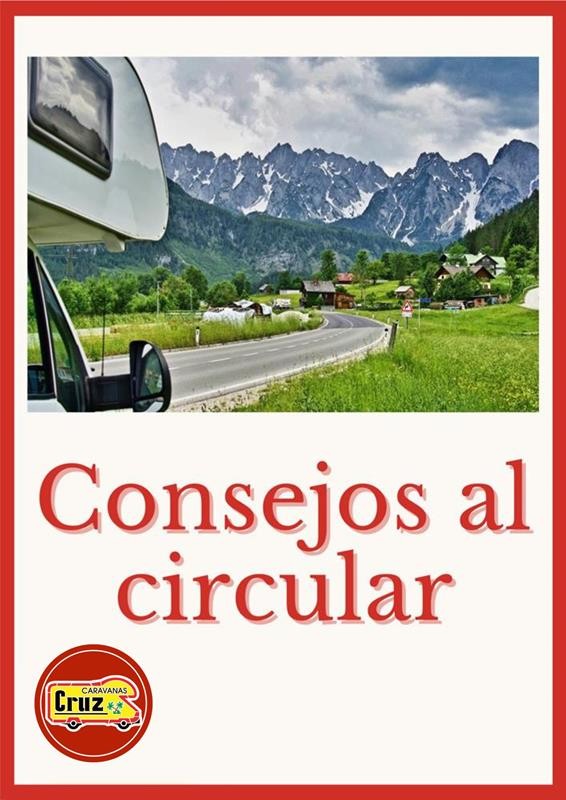DRIVING ADVICE
We have already reviewed the basic equipment you need to make the most of your caravan or motorhome, and what you need to take into account before setting off on your journey.
Now we share with you some tips for when you are on your way to your destination, so that during the journey you can control certain important aspects that you should always keep in mind. Remember that we are not driving a normal car, and that these vehicles have certain rules and peculiarities that we must respect, especially in recent times when the rise of this way of travelling has made many people join this great family.
And as in any large family, for there to be harmony and to avoid conflicts (which, in our case, can come in the form of a fine), knowledge of the rules is fundamental and the application of something as simple as "common sense" is very necessary.
ON THE ROAD
- Respect the rules of the road when moving and stopping.

- Make overtaking easier by avoiding the grouping of motorhomes.
- Watch out for blind spots and look carefully before manoeuvring.
- Pay attention to the height of your vehicle, as well as the other dimensions and the perimeter, especially in narrow streets and tunnels in local areas.
- Be very careful that your GPS takes into account the size of the vehicle: the route indicated may be inappropriate for the dimensions of the motorhome.
- Respect braking distances.
- Be very careful with weather conditions, especially wind, rain and snow.
- Be aware of the type of road you are driving on (forest roads, around beaches, unpaved roads...).


- Adapt your speed to the weather and the dimensions of your motorhome, always respecting the authorised speeds.
- Always bear in mind that a motorhome is not a utility vehicle, as its dimensions and weight are much greater.
- Motorhomes of less than 3,500 kg can drive, like cars, at a maximum of 120 km/h on motorways and dual carriageways, and 90 km/h on conventional roads. Vehicles over 3,500 kg are limited to 90 km/h on motorways and dual carriageways, and 80 km/h on conventional roads.
- On conventional roads with physical separation of the two directions of traffic, the road owner may set a maximum limit of 100 km/h for passenger cars and motorhomes with a maximum authorised mass of 3,500 kg or less.
- Anticipates emptying and water supply in authorised places. The autonomy of a motorhome is on average two to three days. Do not wait until the last minute to empty and provide water. Try to organise the stages for emptying and refuelling by locating on the route the service areas equipped with water intake and emptying terminals. For this purpose, it will be very useful if you have an App that locates these places along the way. In previous blogs we told you about Park4Night, but there are many to choose from.
- Emptying is NEVER done on the ground, ALWAYS in places equipped for this purpose.
- You must use containers designed for recycling the rubbish generated. We are nature lovers and care for the environment, so we must comply with the 3R rule: Recycle, Reuse and Reduce.

- Park without obstructing traffic.
- When possible, prioritise parking in overnight parking areas.
The future of this sector and the image we project to society will depend on the correct behaviour of each and every one of us.
Many eyes are watching us. We have a lot at stake.









